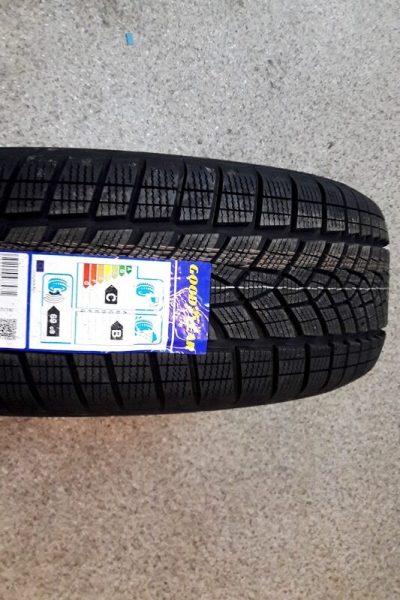
Test drive Goodyear UltraGrip Performance SUV Gen-1 in 4 × 4

Winter tires solve the off-road paradox – safer off-season driving
SUV drivers have an added reason to feel safer: The Goodyear UltraGrip Performance SUV Gen-1 winter tire provides short stopping distances on dry, wet and icy roads.
Goodyear introduces a new SUV tire: the UltraGrip Performance SUV Gen-1. The newest representative of UltraGrip winter tires has been on the market since May 2016.
SUV drivers often feel safer in their large vehicles, especially when they have four-wheel drive, and therefore, drivers have a tendency to think they don't need winter tires. Despite this trend, it is even more important that these cars are equipped with the correct winter tires.
Making SUVs even safer
Thanks to their size, SUVs increase driver confidence. However, these cars are heavier and have a higher center of gravity than cars. As a result, the forces acting on the tire become stronger, making braking and steering even more difficult. A paradox for which Goodyear has a solution.
Alexis Bortoluzi, Goodyear Light Truck Marketing Director for Europe, Middle East and Africa, commented: “SUVs have presented us with a paradox. We have used both our expertise in SUV tires and our premium winter tire technology to enhance our award-winning UltraGrip Performance SUV range. Thanks to a modified design, the UltraGrip Performance Gen-1 crossover offers better traction and therefore safer driving in winter conditions. "
Core technology and features on the UltraGrip Performance SUV Gen-1
1. Movable ribs and tread design
To balance the higher load (or weight) of the vehicle, the tire needs to be stiffer ("stiffness"). The increased stiffness of the tire blocks improves dry handling. However, despite the rigidity, the blocks remain flexible (thanks to the special design of the slats) and thus improve traction on snow.
Technology: 3D BIS (Block Interlocking System)
Benefits: Better balance between dry surface and snow handling.
2. Optimization of the grab for the SUV.
Tire blocks to tilt, not like before. This improves grip on snow.
Benefits: Better braking and traction on snowy and icy surfaces.
3. Optimum contact with the road surface.
The heavier the car, the higher the load on the tires. To withstand these greater forces, the tire width (“footprint”) has been increased compared to its predecessor. The larger the base area, the larger the contact surface, which improves stability.
Technologies: ActiveGrip
Advantages: increased traction and braking efficiency.
4. Tread quality indicator.
Throughout the tire's life, the snow symbol projected onto the tire will gradually disappear. After it has been completely erased, the tire must be replaced to ensure optimal performance in winter conditions.
Technology: TOP Indicator
Benefits: Allows the driver to change tires at the right time for optimal performance.
45 years of excellence in winter tires
In 1971, Goodyear launched the first UltraGrip tire, a line of winter tires that engineers are constantly improving. Innovation over the past 45 years has made Goodyear one of the leaders in the winter tire market. Consumers have embraced the UltraGrip family, with over 60 million tires purchased since its launch. The production of SUVs and 4×4 vehicles has increased dramatically in Europe, the Middle East and Africa since 2012 and is expected to grow in the coming years. With the release of the UltraGrip Performance Gen-1 crossover, we can look forward to meeting growing demand.
Goodyear UltraGrip is again a leader in TÜV tests
The UltraGrip family has been praised time and time again in tests by renowned automotive magazines and test magazines as well as independent tests. Confirming the success of the UltraGrip family in tire testing, the Goodyear UltraGrip Performance Gen-1 SUV outperforms the competition in TÜV tests, stopping wet, dry, icy and snowy roads.
Tests confirm the following results:
• 1,9 meters shorter braking distance on wet roads (efficiency is 7% higher);
• 2,3 meters shorter braking distance on dry road (efficiency 5% higher);
• improvement of braking performance on an icy road by 4%;
• 2% better braking performance on snowy roads - second best result on snow during tests.
